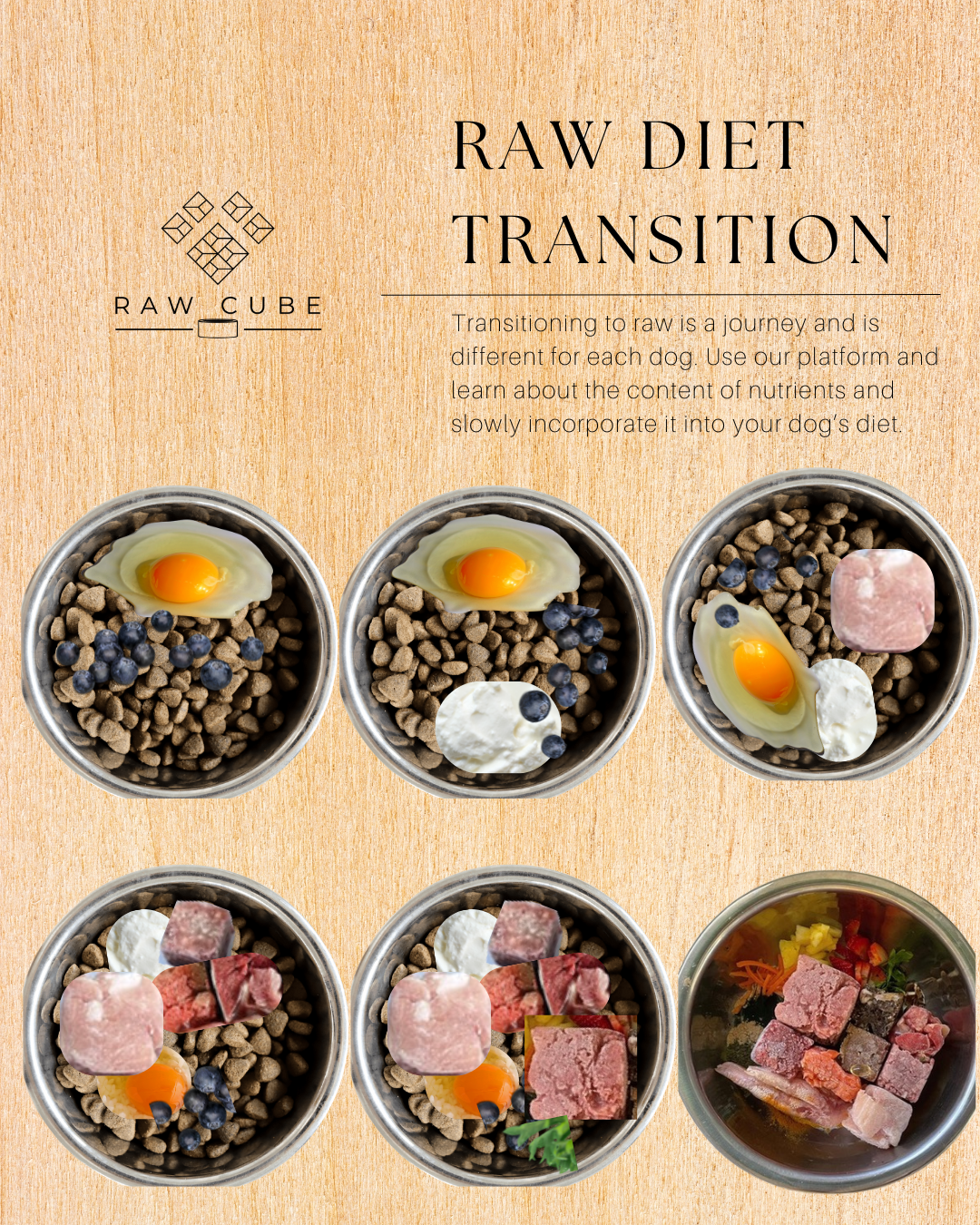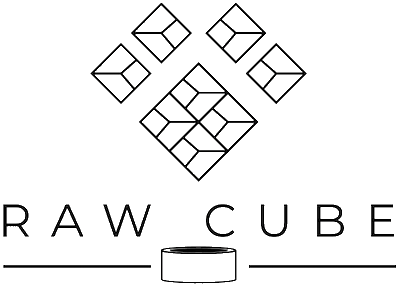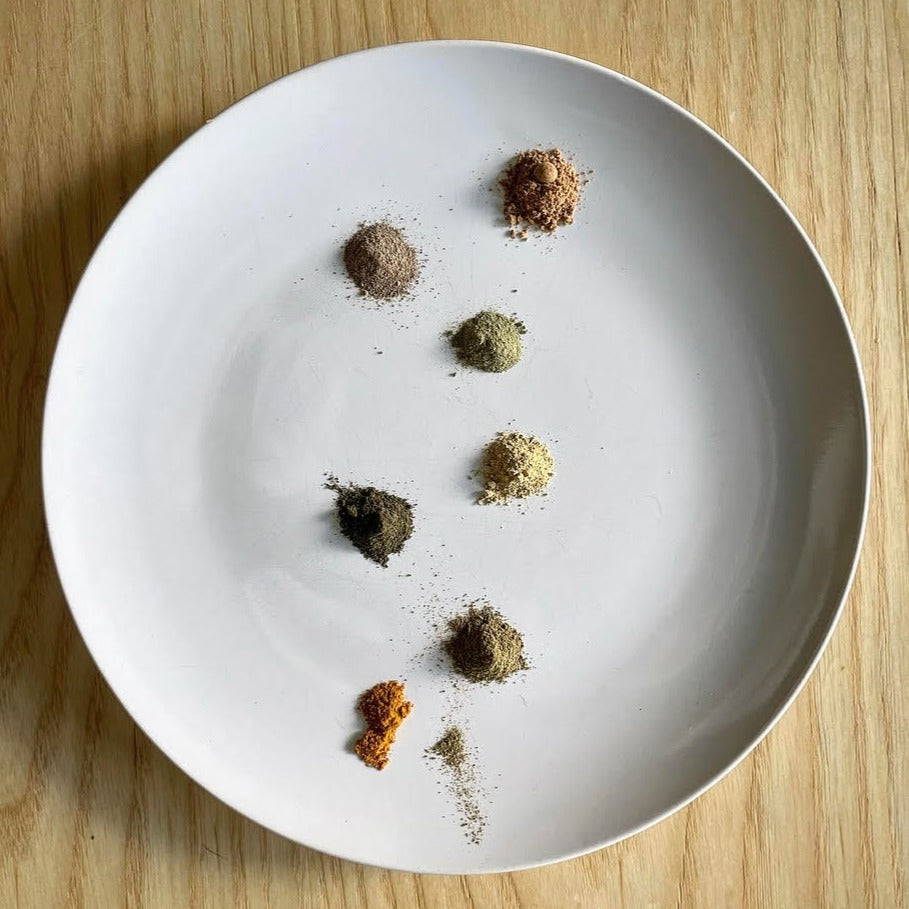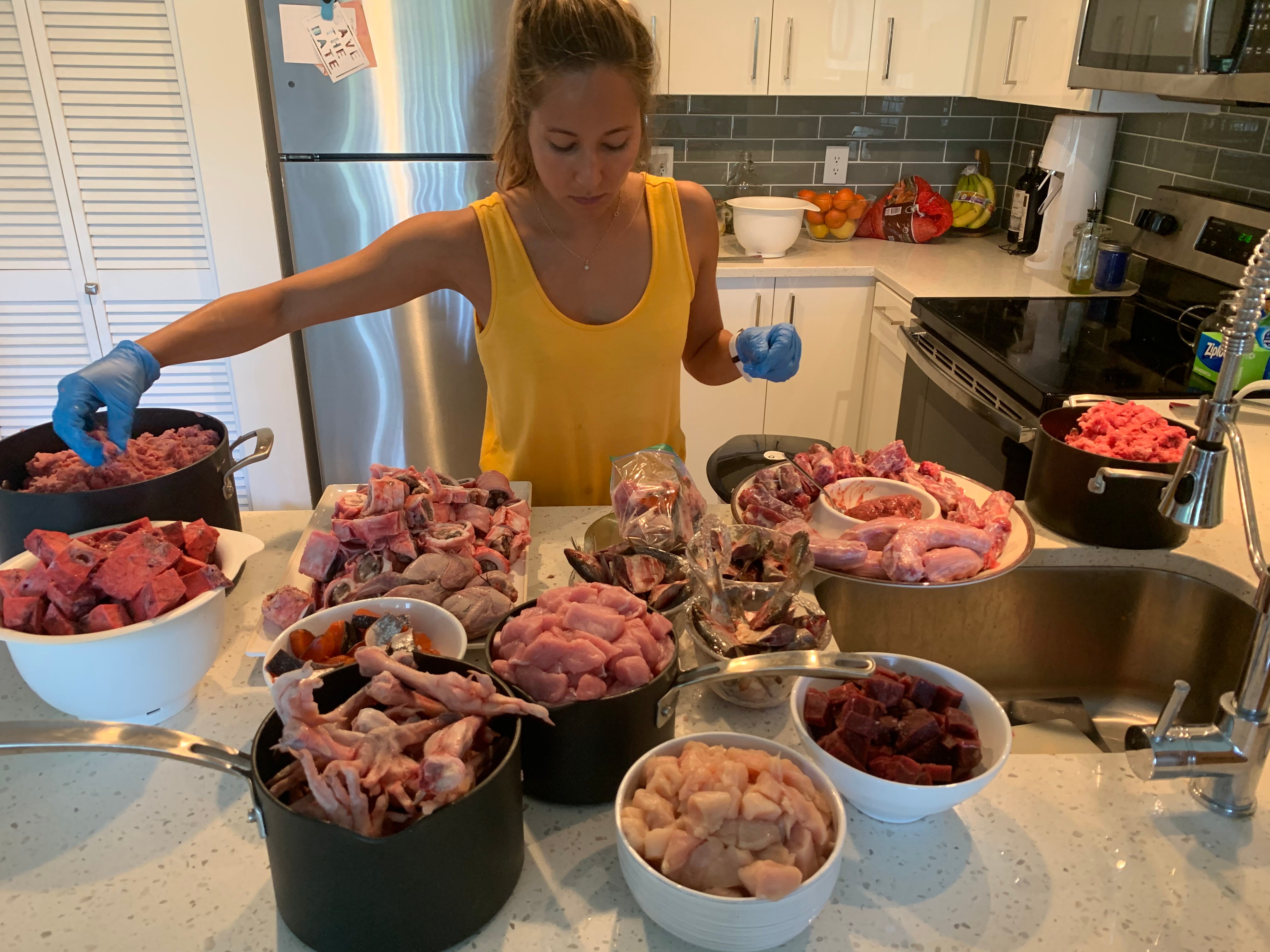
How to Transition your dog into Raw Feeding
How to Transition your Dog to Raw Feeding : Personalized Approach
Transitioning your dog to a raw food diet is a highly individual journey, not a race. While the benefits of raw feeding are widely discussed, the path to get there is unique for every dog. Here’s what you need to know about making the switch and why there’s no “one-size-fits-all” method, what really happens during the transition, and how to support your dog’s digestive health along the way. By understanding the changes happening inside your dog and supporting their gut health, you’ll set the stage for a successful, lasting switch to a raw diet.
There's no Perfect Way. Ever.
Every dog comes with their own history and adaptability : different upbringings, environments, and food exposures. Some dogs may have thrived on a variety of foods, while others have only ever eaten kibble. Because of these differences, the ideal transition plan will vary:
- Background Matters : A dog raised on processed foods may need a slower, more gradual transition than one already used to fresh foods.
-
Ingredient Exposure : Dogs with limited diets may react differently to new proteins or ingredients.
-
Environment : Stress, activity level, and even the water they drink can influence how smoothly the transition goes.
There’s no universal timeline or method. Monitor to your dog and adjust as needed.
What Transitioning to Raw Looks Like
Transitioning your dog to a raw diet is rarely a uniform experience. It can be smooth and uneventful for some, while others may need patience and experimentation. You and your dog might luck out: if your dog is microbially (I may have made this word up?) resilient, the transition could be as simple as a few extra gassy moments or a loose stool or two, and then you’re off and running with raw feeding. For these dogs, the adjustment period is short, and they quickly adapt to the new diet.
For others, the process can take several days or even weeks. You may find yourself experimenting with different proteins, adjusting portion sizes, and making more frequent trips outside due to loose stools or diarrhea. Some dogs may show behavioral signs like grass eating, increased gas, or temporary appetite changes. These reactions are normal and are often a sign that your dog’s digestive system and gut bacteria are working hard to adapt to the new foods and nutrients.
On the brighter side, as your dog’s system acclimates, you may begin to notice positive changes, although these don’t happen overnight. Many owners report a shinier coat, a reduction in that classic “dog smell,” cleaner teeth and fresher breath (especially if feeding whole, edible bone), decrease in water intake (don't be alarmed! there's a high water content in fresh food), and even a newfound calmness in the home. These benefits are signs that your dog’s body is thriving on its new diet, but remember, the timeline for these improvements is highly individual and depends on your dog’s unique background and health.
Why the Transition Takes Time
One of the biggest changes during the switch to raw is what happens inside your dog’s gut. Dogs fed kibble their entire lives have a gut microbiome adapted to highly processed, carbohydrate-rich foods. Raw diets introduce new proteins, fats, and beneficial bacteria—requiring a complete shift in the gut’s ecosystem.
Here's What's Happening:
-
Microbes & Gut Bacteria : any of the microbes needed to break down raw meats and bones may be lacking or dormant in kibble-fed dogs.
-
Adaptation: These beneficial bacteria need time to multiply and adapt to the new diet.
-
Temporary Symptoms: As the gut adjusts, your dog may experience loose stools, mild diarrhea, grass eating, or even occasional vomiting. This is a normal part of the adaptation process (you can reduce the amount of raw food and try different ingredients as well)

Human Analogy : Switching Diets
Think of a person who has been vegan for years and suddenly starts eating meat. Their digestive system may struggle at first—leading to stomach aches, diarrhea, or discomfort. The body needs time to reintroduce and multiply the right microbes to digest animal proteins and fats efficiently.
-
Support during transition: Just as humans might use digestive enzymes, herbs, or elixirs to ease the change, dogs can benefit from supportive measures like probiotics, bone broth, or gentle herbs (such as slippery elm or marshmallow root).
Tips for a Smooth Transition
-
Start Slow: Begin by mixing a small amount of raw food with your dog’s current diet, gradually increasing the raw portion over days or weeks.
-
Monitor Closely: Watch for digestive changes and adjust the pace if needed.
-
Support Gut Health: Consider adding probiotics, prebiotics, or gentle digestive herbs.
-
Stay Flexible : Be prepared to slow down or pause if your dog experiences persistent digestive upset.
-
Consult a Professional : If you’re unsure, work with a veterinarian or canine nutritionist experienced in raw feeding.
-
Ingredients we recommend : Kefir (plain), Greek Yogurt (plain, whole fat), Cottage Cheese, Egg (raw).
- We love the Kefir/Yogurt to start because it offers probiotics. As your dog adjusts, we recommend adding the egg, and slowly generic, ground meats.
- For nutrient content on the above, make sure you check the Raw Cube Diet Formulator

Gradually transition your dog’s bowl by
- Introducing new ingredients one to two ingredients at a time. This not only reduces digestive stress but also helps you as the owner to understand/diagnose what allergies your dog may be predisposed to (so that you don't have to go backwards and do an elimination diet).
- Add quantity of raw food gradually. This is separate from variety which is indicated above. Quantity can be by the number OR size of cubes if you use Raw Cube Cube Molds.
- Start with lean proteins such as turkey or chicken. Many dog owners find out very quickly if their dog is allergic to chicken. It's not a bad thing! and the sooner you find out the better. Other alternative proteins are rabbit.
- As your dog progresses, slowly rotate the proteins and apply Edible Bone before organs or fish or shell fish - we've noticed that with these types of proteins, introduced too early exacerbates their digestive issues if they have any. Chances are, they may incur some, but introducing them later is advised.
- Monitoring their response as you add more cubes and rotate in greater variety. We recommend starting with the ingredients listed in our calculator because they’re affordable, widely available at local grocery stores, and gives you more control over quality, quantity, and more.
For consultation, check out Marketplace to find a list of recommended canine nutritionists.
References
-
Beloshapka, A. N., Duclos, L., & Swanson, K. S. (2012). "Digestibility and bioavailability of nutrients in raw meat diets for dogs." Journal of Animal Science, 90(9), 3245–3256.
-
Brown, W. Y. (2010). "Nutritional and physiological consequences of feeding dogs and cats raw meat-based diets." Companion Animal, 23(12), 68–75.
-
Hand, M. S., Thatcher, C. D., Remillard, R. L., Roudebush, P., & Novotny, B. J. (2010). Small Animal Clinical Nutrition (5th ed.). Mark Morris Institute.
-
Kerr, K. R., Vester Boler, B. M., Morris, C. L., Liu, K. J., Swanson, K. S., & Fahey, G. C. (2012). "Apparent total tract energy and macronutrient digestibility and fecal fermentative end-product concentrations of domestic cats fed extruded, raw beef-based, and cooked beef-based diets." Journal of Animal Science, 90(7), 2578–2585.
-
Sandri, M., Dal Monego, S., Conte, G., Sgorlon, S., & Stefanon, B. (2017). "Raw meat based diet influences faecal microbiome and end products of fermentation in healthy dogs." BMC Veterinary Research, 13(1), 65.
-
"Raw feeding in dogs and cats." Companion Animal, 23(12), 68–75. (2019).
-
Owens, J. A., & Kavanagh, S. (2021). "Clinical health markers in dogs fed raw meat-based or commercial diets." Journal of Animal Science, 99(6), skab133.
-
Lonsdale, T. (2001). Raw Meaty Bones: Promote Health. Rivetco P/L.


